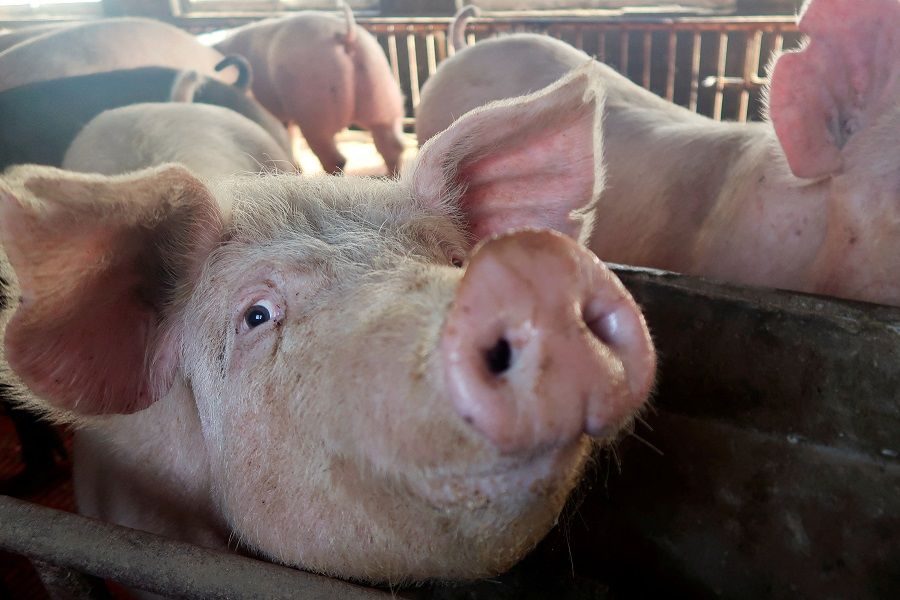Lack of standards a challenge to China’s food safety

Food safety is a big concept, and includes concerns such as food supply guarantees, nutrition and hygiene (i.e. avoiding foodborne diseases).
For the first concern, it is about ensuring that nobody goes hungry, addressing issues such as the quantity or production of food, as well as food distribution. Regarding the latter two, it is about ensuring the nutritional value and hygiene of food, and addressing quality concerns, which fall under public health issues.
Replaced with substandard ingredients
In China and developed countries today, food safety is mainly an issue of quality. In recent years, China’s food safety has undergone changes and improvements, but problems still exist. Recent exposés and incidents that have received public attention have brought to light problems in several areas.
Firstly, the issue of passing off subpar foods for quality foods (food fraud). Secondly, the lack of food hygiene standards. Thirdly, the need for further research on the nutritional and hygiene standards for certain foods, validated by the results of scientific research.
Recently, a popular dish often included in food delivery services — pork belly with preserved mustard greens — was found to be made with pork jowl meat instead. This is a classic example of a food quality and hygiene issue, as it substitutes substandard ingredients for quality ones. This has been a significant research topic under global food safety and health over the past year, encompassing both food fraud and the authentication of food authenticity.
The wholesale price for regular pork belly meat is around 12 RMB (US$1.66) for 500 grams, whereas the wholesale price for substandard pork jowl that has not been treated with strict standards stands at 3 RMB per 500 grams; the price difference is evident.

This does not apply only to China; food fraud, most notably the mixing of fake with real ingredients or the use of fake ingredients, is a chronic problem for the global food industry, and is one that is becoming more complex and varied, and increasingly damaging. It is a food quality and safety issue that needs to be taken seriously, with a focus on prevention.
Weak market supervisory measures
Pork jowl refers to the meat between the pig’s head and its body. Jowl meat contains more lymph nodes, and is also called lymphatic meat. However, to make pork belly with preserved mustard green, it is pork belly meat that should be used. The wholesale price for regular pork belly meat is around 12 RMB (US$1.66) for 500 grams, whereas the wholesale price for substandard pork jowl that has not been treated with strict standards stands at 3 RMB per 500 grams; the price difference is evident.
More importantly, as pork jowl contains the thyroid, lipomas and large amounts of lymph nodes, it is widely considered a low-quality, low-price cut of pork.
China’s “Operating procedures of livestock and poultry slaughtering — Pig” (GB/T 17236-2019) requires that the pig must be treated after being slaughtered, with any visible lymph nodes lesions to be removed along with the adrenal gland, remaining thyroid and so forth. The removal of the thyroid is especially important, as it contains large amounts of hormones that could cause harmful effects if consumed. Slaughtered pigs must undergo treatment before it can be put up for sale.
Some people believe that using jowl meat to make pork belly with preserved mustard green is a problem with pre-made meals. But at its core, this is a problem arising from weak market supervisory measures.
Due to the downsizing and ageing of the food safety regulatory workforce, including both the ageing of personnel in terms of age structure and knowledge structure, as well as the inadequate professional literacy and capabilities of regulatory personnel, it becomes difficult to promptly detect and regulate food quality and safety issues in daily life.
... there is not yet a standard for food quality, hygiene and nutrition for instant rice in China, which makes it difficult for people to have a scientifically informed basis for choosing the product...
Standards for instant rice
A problem that comes forth is that, along with economic development, the demand for diversification and enhancement of foods is growing; yet the food quality supervisory techniques and methods are a step behind. A recent food safety issue in China is ample proof of this — the issue of the quality of instant rice.

Instant rice refers to self-heating rice, which is a convenient and quick food much like instant noodles. The rice used in instant rice is not fake rice, but rather recombinant rice, also called compound rice or processed rice. The nutritional value of instant rice is slightly lower than authentic rice, because in the production process, it is soaked, treated with high temperatures, compressed and so on, which causes it to lose some vitamins, such as vitamin B.
Unfortunately, there is not yet a standard for food quality, hygiene and nutrition for instant rice in China, which makes it difficult for people to have a scientifically informed basis for choosing the product — they can only go off their gut feeling, which could be detrimental to their health over time. Thus, instant rice has also become a food item without legal supervision.
There should be multiple scientific standards for instant rice, just as is the case for instant noodles; for the latter, China has several food standards in place, such as the mandatory “national food safety standards for instant noodles” (GB17400—2015), the recommendatory “national standard for instant noodles” (GB/T40772—2021), the “hygiene standards for use of food additives” (GB2760), as well as the “grain industry recommendatory standard for instant noodles” (LS/T3211—1995).
Hence, the quality standards for instant rice can generally take reference from instant noodles, and it must satisfy the basic food safety requirements, such as being non-toxic, non-harmful, odourless, free of pathogenic bacteria and free of harmful substances. It should also have a clear product name, place of production, batch number, standardised code, factory inspection standards, as well as include the net volume, sensory analysis, moisture level, rehydration period, acid value, peroxide value, aerobic colony count, coliform bacteria count and so on.
People’s knowledge of food content
Along with the progress of the times, there have been changes to the forms and production of foods, and the nutritional value as well as hygiene standards of foods should progress as well in accordance with scientific research. If need be, new standards should be implemented. Recent food-related incidents in China have reflected areas where this has been lacking.

The starch sausage, a popular snack in China with impressive sales figures, has been the subject of suspicion; although it is called a starch sausage, the first ingredient used to make it is meat. In fact, the ingredient used is chicken or chicken bone meal, or duck meat for an even cheaper alternative, with the bulk of the sausage being starch. Some people believe that bone meal is not advisable for human consumption.
On the surface, the issue with starch sausage seems to be one related to food quality and nutrition, but in fact, it is also indicative of scientific knowledge of food and nutrition, because at the heart of it is the question of whether bone meal can be eaten, and if it is nutritious.
... knowledge about it was hidden, which is to say, consumers’ right to knowledge about products was restricted.
According to the “national standard for mechanically separated meat” (GB/T 40463-2021) implemented on 1 March 2022, mechanically separated meat (MSM) refers to the meat on bones of livestock and poultry that are separated using a machine to produce minced meat products. A key part of the standard is that every 100 grams of pork minced meat must contain at least 14 grams of protein and 30 grams or lower of fat. Meanwhile, every 100 grams of chicken minced meat must contain at least 12 grams of protein and 20 grams or lower of fat.
Yet, why do people think that starch sausages that contain bone meal is a problematic substandard food?
The key reason is because knowledge about it was hidden, which is to say, consumers’ right to knowledge about products was restricted. Although starch sausages also have food labels that show the main and other ingredients, meat or chicken is stated as the first ingredient, without any clear indication whether it is bone meal or MSM. This is withholding information about certain ingredients from the consumers, which led people to believe that starch sausages was made purely from chicken mixed with starch and other excipients.

Bone meal is actually a rather nutritious substance. According to research, besides protein and fat, chicken bone meal contains relatively high amounts of calcium and iron. Its calcium content is 151 times that of pork, 130 times that of rice, 30 times that of egg, and 13 times that of milk, while its iron content is 4 times that of pork, rice, flour and egg. It is also cheap, making it a very attractive option.
In the US, bone meal is recognised as an edible food ingredient. In 1982, the US Food Safety and Inspection Service recognised MSM as meeting food safety standards, and are allowed to be used in certain foods. Due to the threat of bovine spongiform encephalopathy, bone meal made from cattle was excluded in 2004 from the list of foods for human consumption, but chicken and pork bone meal are still allowed.
Government authorities and industry associations should come up with a national standard for starch sausages and other foods that can be mixed into bone meal as soon as possible.
More oversight and research needed
With regard to such food quality and safety issues, firstly, consumers have the right to know; food labels should state whether chicken or pork bone meal is used, as well as be precise enough to state whether it is bone meal made from chicken carcass or chicken neck, including the composition.
Government authorities and industry associations should come up with a national standard for starch sausages and other foods that can be mixed into bone meal as soon as possible. Food science and technology research organisations should also conduct more studies, to determine the proportion of bone meal to ensure that starch sausages, meatballs and sausages have a better food texture, while also guaranteeing food nutrition and safety.
Only by having and enforcing strict controls, establishing comprehensive and scientific food hygiene standards, as well as constantly learning and adopting the latest scientific results on food and nutrition, can we ensure the public’s food quality and safety.
